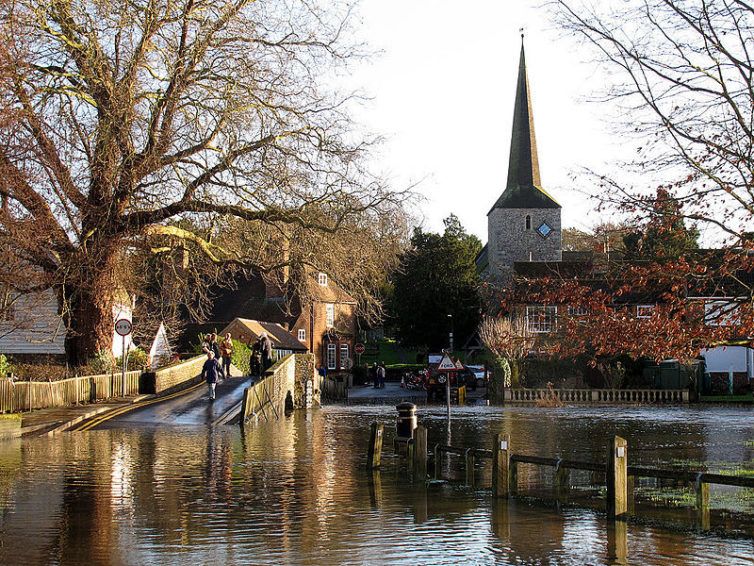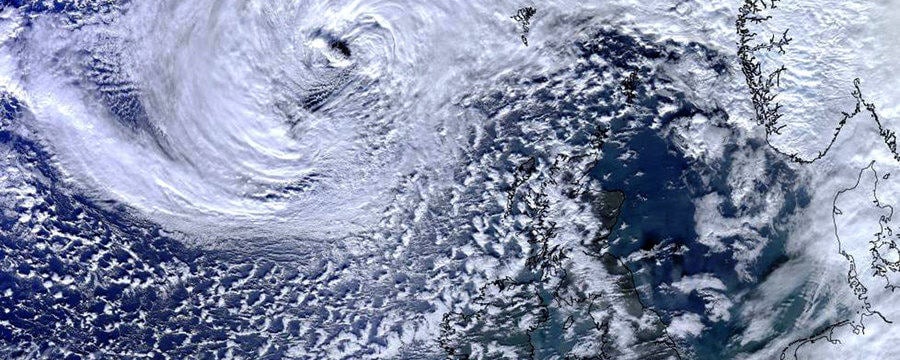Storms in the UK: Recent Mid-Latitude Depressions

Share this step
Mid-latitude depressions are areas of low pressure located between 30° and 60° latitude, causing unsettled weather and rain.
The winter of 2013/14 brought 12 major mid-latitude depressions to the UK. It was the stormiest period of weather experienced by the UK for 143 years. It was the wettest winter in England and Wales since 1766 but also a relatively warm one, with the fewest air frosts since 1961. The storms brought widespread flooding, particularly to Somerset. There was much damage in coastal areas, and both natural and made-made features were destroyed.
28 October 2013
The St. Jude’s day storm was the first of the storms on 28 October 2013 (Figure 1). It mainly affected southern England, and led to four deaths and widespread power failure. At the time, comparisons were made with the 16 October, 1987 storm; the most damaging storm in the recent past, but actually neither the intensity of the storm nor the damage it caused were anywhere near as bad.
Figure 1: A synoptic chart for midnight, 28 October 2013 © Crown Copyright, Met Office.
5 December 2013
Figure 2: A synoptic chart for Midday, 5 December 2013 © Crown Copyright, Met Office
Figure 3. This diagram displays the tidal range for 1- 17 December 2013 at Whitby in Yorkshire, a seaside town on the North East coast of England. The blue bars show the maximum water height at high tide, and the red bars the minimum height at low tide.
24 December 2013
Figure 4: A synoptic chart for midnight, 24 December 2013 © Crown Copyright, Met Office
9/10 December 2014
Figure 5: A synoptic chart for midnight, 9 December 2014 © Crown Copyright, Met Office
The naming of the storms
Figure 6: River flow in the Thames from Winter 1994/95 to winter 2013/ 14 © Chris Beales
Share this
Come Rain or Shine: Understanding the Weather

Come Rain or Shine: Understanding the Weather


Reach your personal and professional goals
Unlock access to hundreds of expert online courses and degrees from top universities and educators to gain accredited qualifications and professional CV-building certificates.
Join over 18 million learners to launch, switch or build upon your career, all at your own pace, across a wide range of topic areas.
Register to receive updates
-
Create an account to receive our newsletter, course recommendations and promotions.
Register for free







